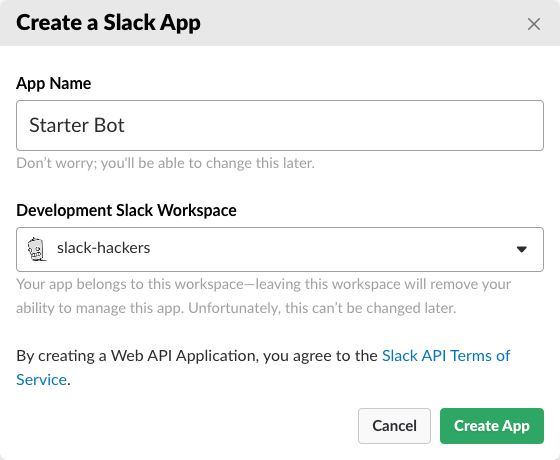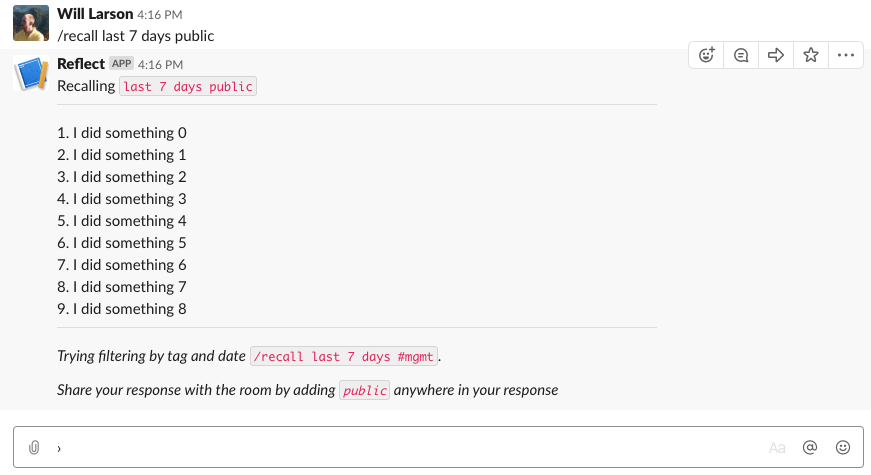

Client Decomposition: Create two independent Slack clients.Print "Connection Failed" Proposal Primary Changes Here's a simple example app that replies "Hi !" in a thread if you send it a message containing "Hello".įrom slackclient import SlackClient slack_token = os.
#Slack client for python code
This makes it harder to deprecated old code or significantly change code that was intended to be private. We’ve not defined an official API for the Client.There are a number of unnecessary/old/deprecated methods and variables that need to be removed.This approach also lacks proper caching support such as removing or updating stale data. The problem with this ad hoc approach to caching is sooner or later apps built on this infrastructure will inevitably experience performance and scalability problems as their app increases in complexity or is installed on larger enterprise teams. Which should only be responsible for managing the web socket connection. We’re loosely caching data on the Server object.This makes building complex apps rather cumbersome. What’s worse is that they also have to create nested if statement to check for their event types on every event that comes in. Every developer has to create a “while connected” loop that constantly reads line by line from the websocket.For developers who don’t use RTM we also unnecessarily store information such as channel data on what’s currently called Server.py.

 Client#api_call→Server#api_call→SlackRequest#do→requests#post. Developers who only need to communicate via the Web API deal with unnecessary complexity. To make an Slack API call, there are 4 nested objects created. There’s no clear separation between the RTM API Client and the Web API Client. It also makes it harder for new app developers or possible first time contributors to get up and running quickly. From a high level, the complexity in our SDK has led to a number of tough to triage bugs. We believe that developers should be able to go from Readme to a running app in less than 10 minutes.Ĭurrently there are a number of limitations in our existing project that prevent this goal from being realized. The goal of our Python SDK is to make it simple for Python developers to create Slack apps. As well as make it simpler for developers to interact with the Web API and respond to RTM events. We'd like to remove any state not explicitly used for the client's function. This issue proposes that we split up the client into an RTM client and a Web client. Web HTTP requests could be simpler to write and more performant when scaled. Currently every app built on RTM is required to implement a loop over the stream of events coming in. This issue proposes a redesign of the Slack Python SDK/Client to address several design flaws that surfaced as the scope and complexity of the platform grew. From internal apps for a specific organization or team to publicly distributed apps listed in our App Directory, tools and products built upon our SDKs improve people's working lives. Python developers are an important part of the Slack platform ecosystem. chat_postMessage ( channel = "C0XXXXXX", blocks = [ " ) # This is the simplest way to run the async method # but you can go with any ways to run it asyncio. See chat.postMessage for more info.Ĭlient. If your app has chat:write.public scope, your app can post messages without joining a channel as long as the channel is public. Note that your app’s bot user needs to be in the channel (otherwise, you will get either not_in_channel or channel_not_found error code). This method will handle either a channel ID or a user ID passed to the channel parameter.
Client#api_call→Server#api_call→SlackRequest#do→requests#post. Developers who only need to communicate via the Web API deal with unnecessary complexity. To make an Slack API call, there are 4 nested objects created. There’s no clear separation between the RTM API Client and the Web API Client. It also makes it harder for new app developers or possible first time contributors to get up and running quickly. From a high level, the complexity in our SDK has led to a number of tough to triage bugs. We believe that developers should be able to go from Readme to a running app in less than 10 minutes.Ĭurrently there are a number of limitations in our existing project that prevent this goal from being realized. The goal of our Python SDK is to make it simple for Python developers to create Slack apps. As well as make it simpler for developers to interact with the Web API and respond to RTM events. We'd like to remove any state not explicitly used for the client's function. This issue proposes that we split up the client into an RTM client and a Web client. Web HTTP requests could be simpler to write and more performant when scaled. Currently every app built on RTM is required to implement a loop over the stream of events coming in. This issue proposes a redesign of the Slack Python SDK/Client to address several design flaws that surfaced as the scope and complexity of the platform grew. From internal apps for a specific organization or team to publicly distributed apps listed in our App Directory, tools and products built upon our SDKs improve people's working lives. Python developers are an important part of the Slack platform ecosystem. chat_postMessage ( channel = "C0XXXXXX", blocks = [ " ) # This is the simplest way to run the async method # but you can go with any ways to run it asyncio. See chat.postMessage for more info.Ĭlient. If your app has chat:write.public scope, your app can post messages without joining a channel as long as the channel is public. Note that your app’s bot user needs to be in the channel (otherwise, you will get either not_in_channel or channel_not_found error code). This method will handle either a channel ID or a user ID passed to the channel parameter. 
One of the primary uses of Slack is posting messages to a channel using the channel ID or as a DM to another person using their user ID. The Python document for this module is available at Messaging ¶ The Slack Web API allows you to build applications that interact with Slack in more complex ways than the integrations we provide out of the box.Īccess Slack’s API methods requires an OAuth token – see the Tokens & Authentication section for more on how Slack uses OAuth tokens as well as best practices.Įach of these API methods is fully documented on our developer site at








 0 kommentar(er)
0 kommentar(er)
